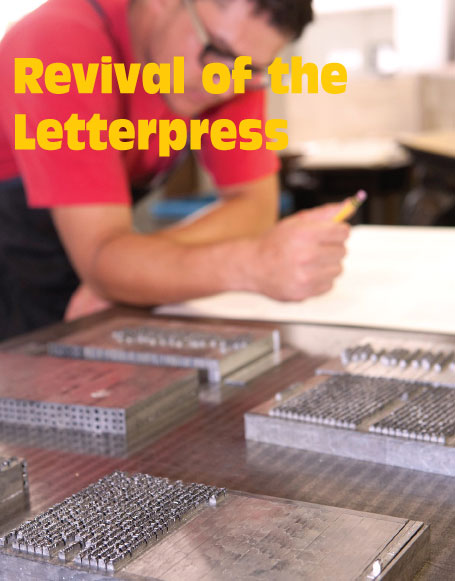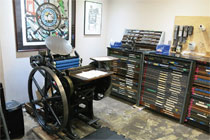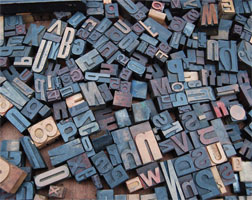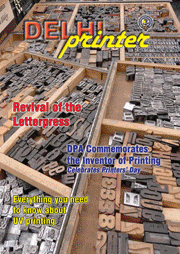




 
|
 |
Did you know that the
letterpress can very well
claim to be the 15th-century
equivalent of the World Wide
Web? Yep, this old-world
invention forever changed
the face of communication
and the speed in which
information could pass from
person to person.
Most notably, it gave birth
to the “press” — the
purveyors of ideas that
shape culture and influence
the direction of both politics
and progress. And until the
late 19th century, all printed
materials, from books to
newspapers to brochures to
cards, were made using the
letterpress.
A Little History
Invented in the mid-1400s
by German blacksmith
Johannes Gutenberg, the
letterpress revolutionized
how books were printed and
distributed in Europe. In
designing movable type,
Gutenberg fathered a much
easier, faster way for
information to be replicated
and communicated. Not only
did the letterpress
accomplish this great feat,
but it also reflected the
intersection of industry,
science, and the arts.
Innovators of later centuries
continued to tinker on his
original press, leading to the
creation of thousands of
different typefaces.
Using a letterpress is labor-intensive, but it’s a labor of love, and there’s absolutely an art to the craft. The process begins by arranging blocks of metal type to form words and sentences. For a larger item like a poster, most blocks need to be carved out of wood. Once the blocks are set in the right order, a letterpress works its magic: it presses paper onto the type blocks, which are coated with ink. The ink is then impressed onto the paper and reflects the letters of the blocks. While the process sounds simple, great skill is required to achieve a consistent, polished look, as it’s done entirely by hand.
|

|
Bringing Letterpress Into the
21st Century
Over the years, letterpress
printing became less
popular due to the invention
of lithography and offset
printing (how newspapers
are printed). Fast forward to
the late 1970s when the age
of computers took hold, and
the dawn of digital printing
ultimately forced letterpress
printing to nearly go the way
of the dodo..
|
So why the renewed interest?
Nostalgia is a significant element that plays into the resurgence of letterpress printing. As digital printers spit out perfect, machinemade replications on a large scale, designers and consumers alike yearn for more tactile imperfection. There’s that undeniable touch of humanity to letterpress printing that binds the creator to the ink left behind, connecting them to the reader in a distant, yet intimate way. Communities across the globe celebrating the bespoke nature of the craft have emerged; thousands of small letterpress shops now create greeting cards and wedding invites — moments that specifically call for love and connection.
Just as Gutenberg’s successors evolved his press, today’s printers continue to play with letterpress, even fusing it with modern technology. A sprinkling of schools (Oregon College of Art and Craft, Southwest School of Art, Seattle’s School of Visual Concepts
|
Concepts and Rochester
Institute of Technology, to
name a few) have brought
back the craft with fully
equipped workshops, and
often encourage projects
that bring it to the forefront
of design. A student at
Hamilton College in New
York is one such letterpress
aficionado. After falling in
love with an ornate 1800s
typeface, he modeled and
3D-printed versions of the
elaborate type. Other
letterpress printers
experiment with new ways to
create designs, such as by
cutting linoleum by hand and
then engraving finer details
with a laser.
|

|
Thanks to these schools
and communities, traditional
letterpress printing
continues to delight and
charm viewers with exquisite
typefaces and beautiful
imperfection. To dive even
deeper into the fascinating
world of letterpress, check
out our article, “Printing with
Love”.
By Amy Adams |
|

|
|

